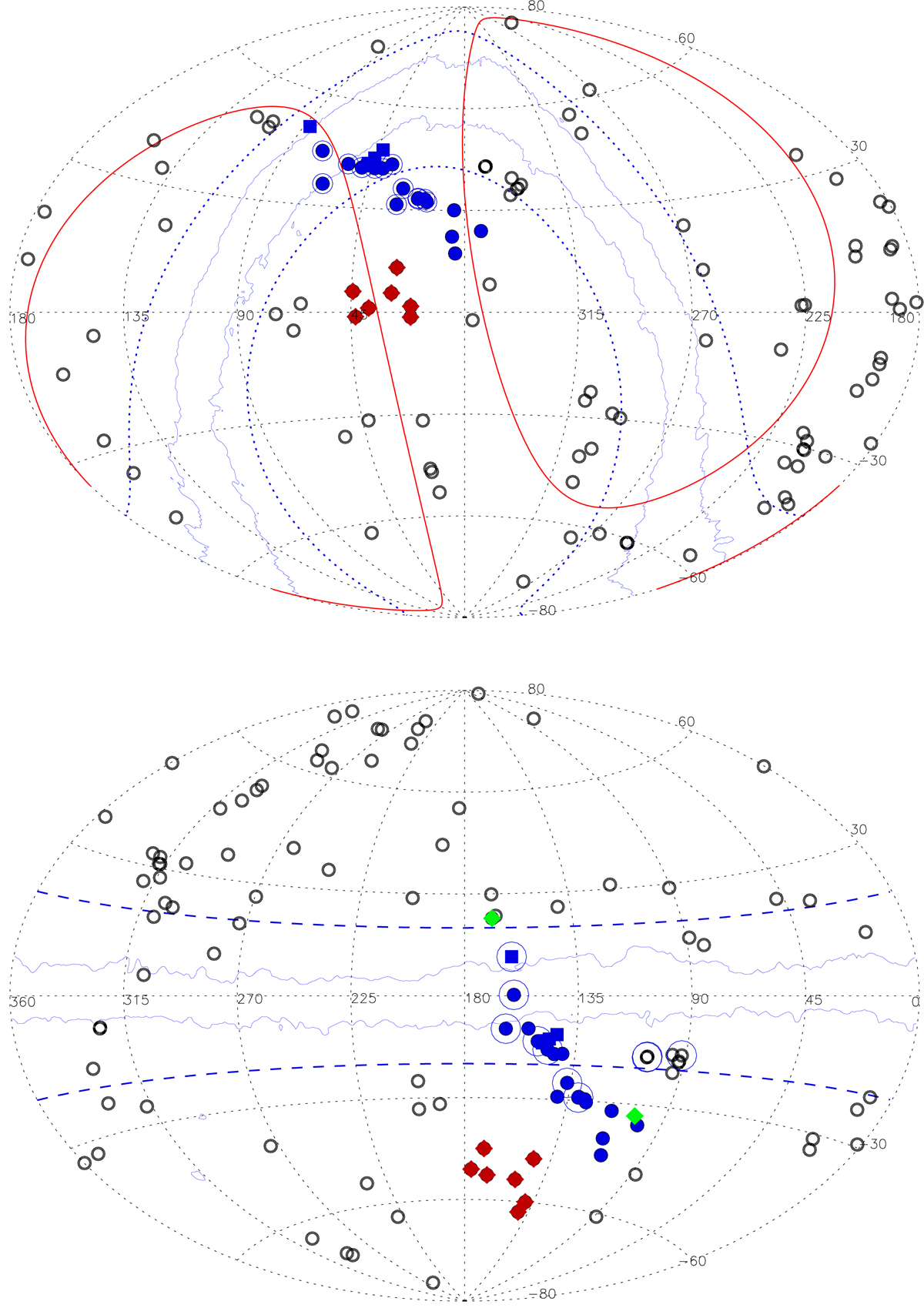Fig. 1.

Sky distribution of the CLASSIX galaxy clusters in the redshift range z = 0 − 0.025. The clusters associated with the Perseus-Pisces SC are shown as blue solid circles (z ≤ 0.025) and blue solid squares (z > 0.025) and those belonging to the SGW as red solid diamonds. Top: map in equatorial coordinates. The members of the core part of the Perseus-Pisces SC are shown with open circles around the circles and squares. The Galactic band (bII = ±20°) is shown by the blue dotted lines, the region with high hydrogen column density (nH ≥ 2.5 × 1021 cm−2) is indicated by the solid blue lines, and the Supergalactic band (SGB = ±20°) by the red lines. Bottom: map in Galactic coordinates. The larger blue open circles show the members of the Perseus-Pisces SC found with an increased lower luminosity limit of 1043 erg s−1 as explained in Sect. 4.3. The two green points show the two clusters A 569 (positive bII) and A 2634 (negative bII), which are part of the discussion in Sect. 5.
Current usage metrics show cumulative count of Article Views (full-text article views including HTML views, PDF and ePub downloads, according to the available data) and Abstracts Views on Vision4Press platform.
Data correspond to usage on the plateform after 2015. The current usage metrics is available 48-96 hours after online publication and is updated daily on week days.
Initial download of the metrics may take a while.


